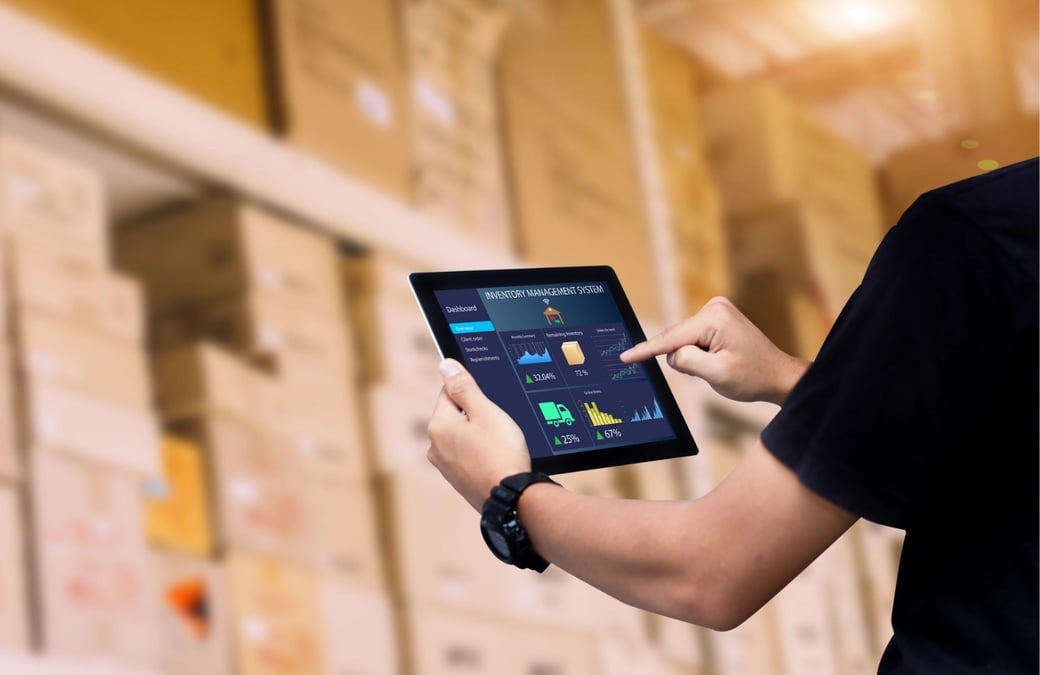According to PWC’s 2023 Digital Trends in Supply Chain Survey, 63% of organizations now benefit from technological solutions to monitor and improve their supply chain efficiency. While this is an encouraging statistic to start the year with, what about all the rest of the businesses that have yet to adopt technological solutions to optimize their supply chain management?
In this article, we highlight the role of data analytics as a key technological solution that can produce great results for your supply chain efficiency. We’ll also share tips on how you can go about making data an integral part of your operations from sourcing and production to quality control and shipping.
8 Ways to Optimize Your Supply Chain with Data Intelligence
Modern supply chains are global systems of operations that can be quite complex and have an incredible amount of moving parts. Even a single disruption — if left untreated — can cause issues such as lost production time, overstocked warehouse, products that go bad, and delayed deliveries.
Needless to say, these issues can leave a lasting impact on your production costs, supplier relationships, and brand repute.
Below, we share 8 ways you can use data to help you identify areas where you can improve your supply chain and turn it into a well-oiled machine.
● Foster a culture centered on data
Organizations that don’t rely on data need a cultural shift towards a data-centered approach. From the top leadership to the newest temp, all employees must come to see data as a valuable asset, understand its relevance to their operations, and gain an awareness of how it will be used from now on.
Training seminars and team workshops can help. Employees should be introduced to the new tools, software, or programs they’ll use in their daily operations. Regular training sessions can help make this a smooth transition.
● Collect data and integrate it
All organizations generate data but for those who now want to understand it, collection of the data is the first step. You can organize this data from multiple sources, including from within the organization and external sources, like your suppliers. This data could include things like production schedules, material costs, inventory levels, lead times, shipping routes, and others.
Once the data is collected, it needs to be integrated into the data analytics systems that you have chosen for your organization. There are hundreds of such systems available, get in touch with these data specialists to figure out your needs and ideal solutions.
● Identify key performance metrics to track
To use data analysis to optimize your supply chain, you have to identify key areas that you want to study. Some of these areas are universal to all organizations, for example, inventory levels or shipping schedules. But there could be factors that are unique to you, such as inventory turnovers at a particular warehouse, or seasonal shortages that impact your material sourcing.
Once you’ve identified these KPIs, predictive analysis (or other programs) can help you make sense of what you could be dealing with in the future, how have you performed in the past, and what is the best way to move forward in the present.
● Conduct advanced demand forecasting
Nobody likes delayed deliveries or messed up orders. One way you can always meet your customers’ demands most efficiently — without incurring extra costs or overstocking the warehouse — is to accurately forecast upcoming demand.
Predictive analysis using advanced solutions helps you ascertain forecasting by going deeper into analytics. Instead of just focusing on having more inventory on hand to never have backorders, these solutions take multiple factors into account to give you an overall picture where you can manipulate different areas of the production to arrive at the most balanced and optimum supply chain operation.
● Keep consistent communication across all channels
Data is cool but strong communication is cooler — especially in the context of efficient supply chains. Keep your employees on board as you roll out data integration plans, train them with the right tools, and be there when they need help. Emphasis on communication isn’t limited to internal customers but external partners too.
Create a business logo and perception that aligns well with your core values so that when you market your brands, you can attract supply chain partners who share your vision. This will ensure that you are doing business with the people that you can truly rely on.
● Improve route planning and transportation tracking
Optimum route planning is an important cog in the uninterrupted supply chain. Tools like Minitab Statistical Software allow you to analyze factors like weather conditions, traffic, and historical delivery times making your logistics more optimized.
Real-time transportation tracking can get you the data you need to identify and study factors that affect deliveries every day.
● Achieve customer satisfaction
Whether or not your customers are happy at the end of a supply chain operation is the most significant metric that can decide if the whole endeavor can be considered a success. While repeat orders are an indication that your business is working, it’s critical to understand things like what exactly is driving that behavior. In other words, what is your strongest point and what are some gaps you could be overlooking that could harm you in the long run?
Conclusion
Data analytics helps you replace your gut feelings with data-backed decision-making. You’re no longer just shooting in the dark or following in the footsteps of your organization’s past. With data, you can step into the present more confidently and address your supply chain issues with more surety.
Stay in touch for more updates and alerts visit: Internal Insider!










